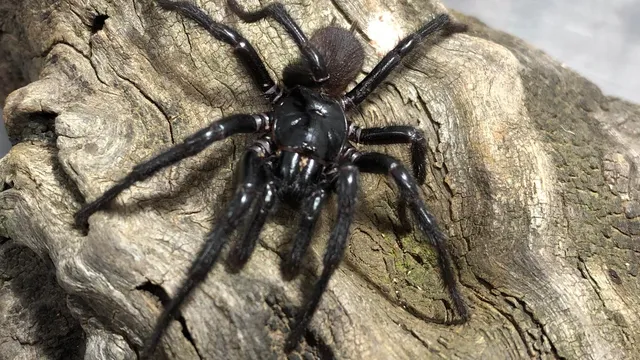
Larger and deadlier spider variant discovered near Sydney
2025-01-15 09:47- Researchers in Australia identified a new species of funnel-web spider, Atrax christenseni.
- This discovery underscores the hidden diversity among funnel-web spiders previously classified as a single species.
- The findings may lead to better antivenom production and raise awareness about the dangers of spider bites.
Express your sentiment!
Insights
In Australia, researchers have identified a new species of funnel-web spider, marking a significant discovery in the field of arachnology. The new species, dubbed Atrax christenseni, represents one of three distinct species that were previously classified under the broader Sydney funnel-web spider category. This study not only involved modern techniques such as DNA analysis but also relied on historical specimens dating back to the early 1900s. Analyses revealed substantial anatomical differences that prompted a reevaluation of previously understood spider diversity in the region. Furthermore, the discovery followed the collection of unusually large male specimens by Kane Christensen, igniting interest within the scientific community. The new funnel-web from Newcastle stands out due to its large size and potential increased venom potency compared to its counterparts. The implications of this study extend beyond taxonomy; the differentiation of species could impact antivenom development and public health recommendations concerning spider bites. Although fatalities from funnel-web bites have been minimized due to the availability of antivenom since the 1980s, being correctly informed about the species involved could optimize treatment further. Such discoveries emphasize the importance of biodiversity studies and international collaboration, as scientists continue to unveil the complexities of Australia's unique fauna.
Contexts
The Sydney funnel-web spider, scientifically known as Atrax robustus, is one of the most recognizable and studied arachnids in Australia. This spider is native to the eastern regions of New South Wales, particularly concentrated in and around Sydney. It is renowned for its potent venom, which is a significant survival adaptation in the wild, allowing it to subdue prey quickly. Despite its fearsome reputation, the Sydney funnel-web spider is an integral part of its ecosystem, influencing the population dynamics of its prey and serving as a food source for predators. Research has shown that this species plays a crucial role in maintaining the balance of the local environment, emphasizing the importance of understanding spider diversity within this habitat. Understanding their behaviors and ecological relationships can encourage sustainable practices to prevent their decline due to urban development and habitat loss. Diversity among Sydney funnel-web spiders is noteworthy, with various morphological forms and color patterns present across different populations. This diversity arises from a combination of genetic variation, environmental factors, and adaptive responses to ecological pressures. For instance, distinct populations may evolve different traits in response to varying climatic conditions or availability of prey. Researchers utilize genetic analysis techniques to explore these differences, identifying unique genetic markers that can aid in conservation efforts. The determination of genetic diversity is paramount for assessing the health of these populations and their ability to adapt to changing environments. Moreover, the ecological niche occupied by the Sydney funnel-web spider is diverse, comprising both terrestrial and burrowing behaviors which optimize their hunting and mating strategies. Their silk structures are an exquisite example of natural engineering, serving multiple purposes, from creating webs for capturing prey to crafting protective retreats. The interaction of these spiders with their habitat and prey species is complex, impacting population dynamics and ecosystem health. The Sydney funnel-web spider's preference for moist environments significantly influences its distribution, often found in the leafy undergrowth of wooded areas, and gardens adjacent to urban settings, linking human habitation with natural ecosystems. Ongoing research on the Sydney funnel-web spider is essential, given their ecological significance and potential threats from human activities. Conservation efforts necessitate awareness of their role in biodiversity and the potential implications of their loss in the food web. By fostering a greater understanding of these spiders, researchers and conservationists can design involved strategies to preserve their populations. This will not only support the ecological integrity of their habitats but also protect the cultural and scientific heritage associated with one of Australia's most iconic arachnids.